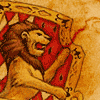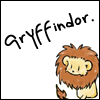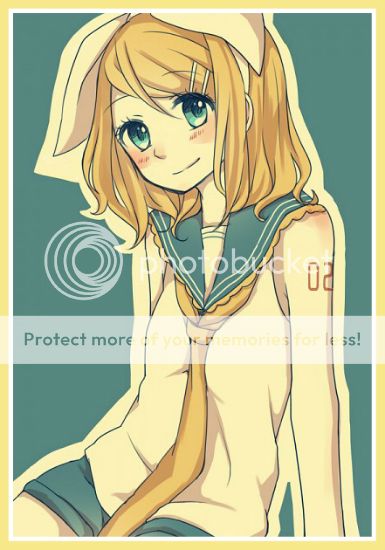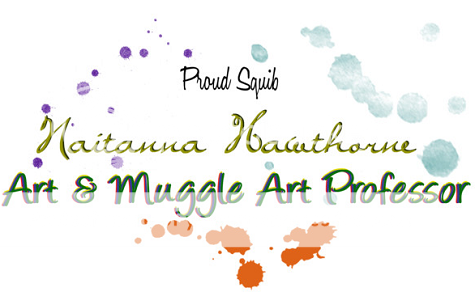|
|
|
|
|
|
|
|
|
 Posted: Sun May 22, 2016 3:58 pm Posted: Sun May 22, 2016 3:58 pm
Three little birds sat on my window.
And they told me I don't need to worry.
Summer came like cinnamon
So sweet,
Little girls double-dutch on the concrete.  ¤ Artist ¤ Married ¤ Mother of Two Class List:
Rhys Hamilton-Blake
Siobhan 'Hannah' Grey
Emma Bailey Tanna walked into her classroom practically skipping from her great start of the new year. She went over to her chalkboard to write Sketching Techniques in her familiar curly script. "Welcome back, I hope you all had a great first week of classes. Now, last week we went over basic lines and figures so now we're moving on to technique. A good tip before we begin is to always make the outline light to start with. Use a soft lead pencil to draw the initial sketch with very light outlines. Use minimal pressure and make your lines just heavy enough so that you can see them. With light lines you can erase without leaving deep indentations in your paper. This is a nice little drawing technique trick to help you just in case you make a mistake or have to adjust something – which I guarantee you will. Now there are 5 excellent techniques to basic sketching:
One, Drawing Contours. In this exercise you basically pick an object whether it’s a picture or anything you can see and try to draw it without lifting your pencil off of the paper. Doing this will help you to be able to practice getting the proportions correct.
Two, Drawing Motion. Recording movement helps grasp the overall image. Try to draw the movement of the person or object you see. Do it quickly, don’t try to give it a finished look because these are just practice drawings!
Three, Drawing with a grid. This is an excellent exercise to give you a sense of proportion. Draw a grid on a blank piece of paper and then try to sketch an image on it. The grid will help you position the objects in the picture and also to make them proportionate. This is an excellent technique when sketching faces.
Four, Drawing in a continuous line. Another focusing exercise: put the pencil on the paper and try to reproduce what you see with a continuous line, without lifting the pencil. Try to focus more on the object, not so much on your sketching. You can do a figure eight or any continuous shape as long as you don’t have to lift your pencil from the paper.
And five, Blind drawing. Try to sketch what you see without looking at your drawing at all. This exercise helps you “feel” your tools and also improve coordination and focus.
For the remainder of class I'd like you to pick two techniques you'd like to begin with and attempt their exercises. There is grid paper available on all your desks if you would like to start with that one and pencils can be found on any surface of the room just in case you don't have one. For homework I'd like you to do the remaining techniques. If you have any questions or issues don't hesitate to ask me and when you're finished you're free to go." Tanna grinned and clapped softly but happily. Girl, put your records on, tell me your favourite song
You go ahead, let your hair down
Sapphire and faded jeans, I hope you get your dreams,
Just go ahead, let your hair down. [Wearing: Wearing] [With: Students] [Where: Classroom] [Feeling: Excited] [Thinking: Continuing on] [OOC:]
|
 |
 |
|
|
|
|
|
|
|
|
|
|
|
|
 Posted: Tue May 31, 2016 5:26 pm Posted: Tue May 31, 2016 5:26 pm
|
|
|
|
|
|
|
|
|
|
|
|
|
 Posted: Wed Jun 01, 2016 7:34 pm Posted: Wed Jun 01, 2016 7:34 pm
|
|
|
|
|
|
|
|
|
|
 Posted: Sat Aug 13, 2016 10:21 am Posted: Sat Aug 13, 2016 10:21 am
Three little birds sat on my window.
And they told me I don't need to worry.
Summer came like cinnamon
So sweet,
Little girls double-dutch on the concrete.  ¤ Artist ¤ Married ¤ Mother of Three [Class List]
Aimee McHalen
Colin Beckett
Diantha Warlow Tanna set up her classroom in the first few weeks she arrived back at the castle and was now waiting on the corner of her desk for her new set of Fourth Years. Another small class but again, another group interested in learning. Excitedly she waited until each student was in their seat before starting. "Hello and welcome to Art II. To start things off I'd like to go over three periods of art today and then next lesson we'll focus on the art practice." She turned and went to the chalkboard to write 'Neoclassical, Baroque, and Rococo' before turning back around. "Neoclassicism is the name given to Western movements in the decorative and visual arts, literature, theatre, music, and architecture that draw inspiration from the "classical" art and culture of Ancient Greece or Ancient Rome. The main Neoclassical movement coincided with the 18th century Age of Enlightenment, and continued into the early 19th century, latterly competing with Romanticism. In architecture the style continued throughout the 19th and 20th centuries and into the 21st. It was a revival of the styles and spirit of classic antiquity inspired directly from the classical period and was initially a reaction against the excesses of the preceding Rococo style. In English, the term 'Neoclassicism' is used primarily of the visual arts; the similar movement in English literature, which began considerably earlier, is called Augustan literature, which had been dominant for several decades, and was beginning to decline, by the time Neoclassicism in the visual arts became fashionable. Though terms differ, the situation in French literature was similar. In music, the period saw the rise of classical music, and "neoclassicism" is used of 20th century developments.
"Baroque is a period of artistic style that used exaggerated motion and clear, easily interpreted detail to produce drama, tension, exuberance, and grandeur in sculpture, painting, architecture, literature, dance and music. The style began around 1600 in Rome, Italy and spread to most of Europe. Baroque style featured "exaggerated lighting, intense emotions, release from restraint, and even a kind of artistic sensationalism". Baroque art did not really depict the life style of the people at that time; however, "closely tied to the Counter-Reformation, this style melodramatically reaffirmed the emotional depths of the Catholic faith and glorified both church and monarchy" of their power and influence. There were highly diverse strands of Italian baroque painting, from Caravaggio to Cortona; both approaching emotive dynamism with different styles. Another frequently cited work of Baroque art is Bernini's Saint Theresa in Ecstasy for the Cornaro chapel in Saint Maria della Vittoria, which brings together architecture, sculpture, and theatre into one grand conceit.
Finally, Rococo, also referred to as "Late Baroque", is an 18th-century artistic movement and style, which affected several aspects of the arts including painting, sculpture, architecture, interior design, decoration, literature, music and theatre. The Rococo developed in the early part of the 18th century in Paris, France as a reaction against the grandeur, symmetry and strict regulations of the Baroque, especially that of the Palace of Versailles. It additionally played an important role in theatre. In the book The Rococo, it is written that there was no other culture which "has produced a wittier, more elegant, and teasing dialogue full of elusive and camouflaging language and gestures, refined feelings and subtle criticism" than Rococo theatre, especially that of France. Though Rococo originated in the purely decorative arts, the style showed clearly in painting. These painters used delicate colors and curving forms, decorating their canvases with cherubs and myths of love. Portraiture was also popular among Rococo painters. Some works show a sort of naughtiness or impurity in the behavior of their subjects, showing the historical trend of departing away from the Baroque's church/state orientation. Landscapes were pastoral and often depicted the leisurely outings of aristocratic couples.
For the remainder of class, please go around to the different stations and view these's time periods famous and favorite arts. When you feel you are finished you may leave." Tanna grinned and gestured towards all her artworks. Girl, put your records on, tell me your favourite song
You go ahead, let your hair down
Sapphire and faded jeans, I hope you get your dreams,
Just go ahead, let your hair down. [Wearing: Wearing] [With: Students] [Where: Classroom] [Feeling: Excited/Happy] [Thinking: New year!] [OOC:]
|
 |
 |
|
|
|
|
|
|
|
|
|
|
|
|
|
|
|
 Posted: Mon Aug 29, 2016 6:24 pm Posted: Mon Aug 29, 2016 6:24 pm
Three little birds sat on my window.
And they told me I don't need to worry.
Summer came like cinnamon
So sweet,
Little girls double-dutch on the concrete.  ¤ Artist ¤ Married ¤ Mother of Three [Class List]
Aimee McHalen
Colin Beckett
Diantha Warlow Tanna had been grading an extra credit essay when she saw her class fill up and happily went over to the middle of the classroom and wrote in her curly script 'Basic lines and Figures.' "When you first start a sketch it is a good idea to lightly draw your lines in case you need to erase any later on. A big mistake a lot of people do when they first start the outline of a sketch is they typically press down to hard with their pencil thus creating a dark line and an indention in the paper. This will not only be hard to erase later on but may damage the paper because of the indention created. Start your sketch with a harder lead pencil or just not press down to hard when you’re doing the rough outline. Use basic shapes if you have a hard time drawing an object. When first learning how to sketch, most have a hard time getting the sketch to look like what they are drawing. One way to get your sketch started is to break down the drawing using basic shapes like so," Tanna picked up the chalk and drew an oval with four straight lines: three horizontal to depict the eye, nose, and mouth region while one going vertical to split the oval in half. She then drew a series of squares, rectangles and small ovals to depict eyes, nose, mouth, and ears. "Another important measure to keep in mind is to visualize how you want your final drawing to look on your paper before starting your sketch in order to avoid coming too close to the edge of the paper or even worse, running out of room. Visually lay out how you want the sketch to look on paper then lightly draw the outline making sure to stay within an imaginary border. And finally, and most importantly, take your time when sketching. There is no time limit when it comes to creativity. I know sometimes you might get stuck, kind of like writers block, so instead of getting frustrated and feeling like you’re on some kind of schedule walk away – take a break. Come back when you feel better and if you still can’t get past that roadblock, set your sketch to the side and come back to it at a later date.
For the remainder of class I'd like you to do a basic sketch of your face and for homework I'd like you to find something, anything or anyone at all, to do a basic sketch over. The homework isn't graded its merely a tool to enable better understanding of what we do in class. When you're finished you may leave it behind or take it with you and then you may take a look around the classroom before leaving."Girl, put your records on, tell me your favourite song
You go ahead, let your hair down
Sapphire and faded jeans, I hope you get your dreams,
Just go ahead, let your hair down. [Wearing: Wearing] [With: Students] [Where: Classroom] [Feeling: Excited/Happy] [Thinking: New year!] [OOC:]
|
 |
 |
|
|
|
|
|
|
|
|
|
|
|
|
 Posted: Sat Nov 12, 2016 12:05 pm Posted: Sat Nov 12, 2016 12:05 pm
Three little birds sat on my window.
And they told me I don't need to worry.
Summer came like cinnamon
So sweet,
Little girls double-dutch on the concrete.  ¤ Artist ¤ Married ¤ Mother of Three
[Class List:]
Kiera Murdoch
Fianna Grey
Tanna set up her classroom in the first few weeks she arrived back at the castle and was now waiting on the corner of her desk for her new set of Fourth Years. Another small class but again, another group interested in learning. Excitedly she waited until each student was in their seat before starting. "Hello and welcome to Art II. To start things off I'd like to go over three periods of art today and then next lesson we'll focus on the art practice." She turned and went to the chalkboard to write 'Neoclassical, Baroque, and Rococo' before turning back around. "Neoclassicism is the name given to Western movements in the decorative and visual arts, literature, theatre, music, and architecture that draw inspiration from the "classical" art and culture of Ancient Greece or Ancient Rome. The main Neoclassical movement coincided with the 18th century Age of Enlightenment, and continued into the early 19th century, latterly competing with Romanticism. In architecture the style continued throughout the 19th and 20th centuries and into the 21st. It was a revival of the styles and spirit of classic antiquity inspired directly from the classical period and was initially a reaction against the excesses of the preceding Rococo style. In English, the term 'Neoclassicism' is used primarily of the visual arts; the similar movement in English literature, which began considerably earlier, is called Augustan literature, which had been dominant for several decades, and was beginning to decline, by the time Neoclassicism in the visual arts became fashionable. Though terms differ, the situation in French literature was similar. In music, the period saw the rise of classical music, and "neoclassicism" is used of 20th century developments.
"Baroque is a period of artistic style that used exaggerated motion and clear, easily interpreted detail to produce drama, tension, exuberance, and grandeur in sculpture, painting, architecture, literature, dance and music. The style began around 1600 in Rome, Italy and spread to most of Europe. Baroque style featured "exaggerated lighting, intense emotions, release from restraint, and even a kind of artistic sensationalism". Baroque art did not really depict the life style of the people at that time; however, "closely tied to the Counter-Reformation, this style melodramatically reaffirmed the emotional depths of the Catholic faith and glorified both church and monarchy" of their power and influence. There were highly diverse strands of Italian baroque painting, from Caravaggio to Cortona; both approaching emotive dynamism with different styles. Another frequently cited work of Baroque art is Bernini's Saint Theresa in Ecstasy for the Cornaro chapel in Saint Maria della Vittoria, which brings together architecture, sculpture, and theatre into one grand conceit.
Finally, Rococo, also referred to as "Late Baroque", is an 18th-century artistic movement and style, which affected several aspects of the arts including painting, sculpture, architecture, interior design, decoration, literature, music and theatre. The Rococo developed in the early part of the 18th century in Paris, France as a reaction against the grandeur, symmetry and strict regulations of the Baroque, especially that of the Palace of Versailles. It additionally played an important role in theatre. In the book The Rococo, it is written that there was no other culture which "has produced a wittier, more elegant, and teasing dialogue full of elusive and camouflaging language and gestures, refined feelings and subtle criticism" than Rococo theatre, especially that of France. Though Rococo originated in the purely decorative arts, the style showed clearly in painting. These painters used delicate colors and curving forms, decorating their canvases with cherubs and myths of love. Portraiture was also popular among Rococo painters. Some works show a sort of naughtiness or impurity in the behavior of their subjects, showing the historical trend of departing away from the Baroque's church/state orientation. Landscapes were pastoral and often depicted the leisurely outings of aristocratic couples.
For the remainder of class, please go around to the different stations and view these's time periods famous and favorite arts. When you feel you are finished you may leave." Tanna grinned and gestured towards all her artworks. Girl, put your records on, tell me your favourite song
You go ahead, let your hair down
Sapphire and faded jeans, I hope you get your dreams,
Just go ahead, let your hair down. [Wearing: Wearing] [With: Class] [Where: Classroom] [Feeling: Excited] [Thinking: New year new students] [OOC:]
|
 |
 |
|
|
|
|
|
|
|
|
|
|
|
|
|
|
|
 Posted: Wed Nov 16, 2016 9:20 am Posted: Wed Nov 16, 2016 9:20 am
 Fianna Grey
Gryffindor │ Fourth Year │ Fourteen Years Old │ Single
Art was always one of Fianna's favourite classes, ever since primary school, and she adored Professor Hawthorne. It was a pity her class had so few students, but that just meant she'd have more time with her teacher, so that was all to the good. When she arrived for her first class, Fianna presented her with a basket with jars of Mother Grey's homemade preserves, cookies and oatcakes. "Hi, Professor,' she said breathlessly. "How was your summer?"
When they tucked into class, there wasn't the usual review of old stuff, but they went straight into the study of new material. Thankfully, she taken some time to read up a bit, so she wasn't entirely rusty. As she went around the stations, looking at the examples of the different periods, she started sketching a few of them to accompany her notes on the subject.
    Turn your magic on, to me she'd say
"Everything you wants a dream away
We are legends, every day"
That's what she told me
Turn your magic on, to me she'd say
"Everything you wants a dream away
Under this pressure, under this weight
We are diamonds"
|
 |
 |
|
|
|
|
|
|
|
|
|
|
|
|
 Posted: Sat Nov 19, 2016 8:36 pm Posted: Sat Nov 19, 2016 8:36 pm
Three little birds sat on my window.
And they told me I don't need to worry.
Summer came like cinnamon
So sweet,
Little girls double-dutch on the concrete.  ¤ Artist ¤ Married ¤ Mother of Three
[Class List:]
Kiera Murdoch
Fianna Grey
Tanna had been grading an extra credit essay when she saw her class fill up and happily went over to the middle of the classroom and wrote in her curly script 'Basic lines and Figures.' "When you first start a sketch it is a good idea to lightly draw your lines in case you need to erase any later on. A big mistake a lot of people do when they first start the outline of a sketch is they typically press down to hard with their pencil thus creating a dark line and an indention in the paper. This will not only be hard to erase later on but may damage the paper because of the indention created. Start your sketch with a harder lead pencil or just not press down to hard when you’re doing the rough outline. Use basic shapes if you have a hard time drawing an object. When first learning how to sketch, most have a hard time getting the sketch to look like what they are drawing. One way to get your sketch started is to break down the drawing using basic shapes like so," Tanna picked up the chalk and drew an oval with four straight lines: three horizontal to depict the eye, nose, and mouth region while one going vertical to split the oval in half. She then drew a series of squares, rectangles and small ovals to depict eyes, nose, mouth, and ears. "Another important measure to keep in mind is to visualize how you want your final drawing to look on your paper before starting your sketch in order to avoid coming too close to the edge of the paper or even worse, running out of room. Visually lay out how you want the sketch to look on paper then lightly draw the outline making sure to stay within an imaginary border. And finally, and most importantly, take your time when sketching. There is no time limit when it comes to creativity. I know sometimes you might get stuck, kind of like writers block, so instead of getting frustrated and feeling like you’re on some kind of schedule walk away – take a break. Come back when you feel better and if you still can’t get past that roadblock, set your sketch to the side and come back to it at a later date.
For the remainder of class I'd like you to do a basic sketch of your face and for homework I'd like you to find something, anything or anyone at all, to do a basic sketch over. The homework isn't graded its merely a tool to enable better understanding of what we do in class. When you're finished you may leave it behind or take it with you and then you may take a look around the classroom at sketches from previous years before leaving."Girl, put your records on, tell me your favourite song
You go ahead, let your hair down
Sapphire and faded jeans, I hope you get your dreams,
Just go ahead, let your hair down. [Wearing: Wearing] [With: Class] [Where: Classroom] [Feeling: Excited] [Thinking: Continuing on] [OOC:]
|
 |
 |
|
|
|
|
|
|
|
|
|
|
|
|
|
|
|
 Posted: Mon Nov 28, 2016 9:22 am Posted: Mon Nov 28, 2016 9:22 am
Three little birds sat on my window.
And they told me I don't need to worry.
Summer came like cinnamon
So sweet,
Little girls double-dutch on the concrete.  ¤ Artist ¤ Married ¤ Mother of Three
[Class List:]
Kiera Murdoch
Fianna Grey
Tanna walked back into her classroom excited because it was another day at teaching her favorite subject and because she had about three things to cover today. Goodness! She hoped her mouth wouldn't go completely numb by the end of the day she still had parent/teacher conference to attend later on. Smiling at her incoming students she went over to the board and wrote out Bernini and Watteau and waited until everyone was seated to begin. "Gian Lorenzo Bernini was an Italian artist and a prominent architect who worked principally in Rome. He was the leading sculptor of his age, credited with creating the Baroque style of sculpture. In addition, he painted, wrote plays, and designed metalwork and stage sets. Bernini possessed the ability to depict dramatic narratives with characters showing intense psychological states, but also organise large-scale sculptural works which convey a magnificent grandeur.His skill in manipulating marble ensured he was considered a worthy successor of Michelangelo, far outshining other sculptors of his generation, including his rival, Alessandro Algardi.
Under the patronage of the Cardinal Borghese, a young Bernini rapidly rose to prominence as a sculptor creating many prominent features to the Villa Borghese including The Goat Amalthea With the Infant Jupiter and Faun, and many religious allegorical busts before he was commissioned to create a bust from the painting of Pope Paul the fifth. After his early years with the church he left to establish himself within the art community creating sculptures of stories well told but never truly seen. Brutal battles and savage attacks on women all put in stone and placed in almost a story-like visage.
While still in Rome, Bernini worked on adding giant bells towers to embellish the facade of the basilica, originally designed by Carlo Maderno earlier in the century but cracks appeared during the workings on the facade and put a stop to production. While not his fault, Bernin was still blamed and thus he felt rather uncomfortable to remain in Rome and moved to Paris to continue another side of his art: architecture. Works that include sacred and secular buildings and sometimes their urban settings and interiors. Amongst his most well known works are the Piazza San Pietro (1656–67). When Bernini was invited to Paris in 1665 to prepare works for Louis XIV, he presented designs for the east facade of the Louvre Palace but his projects were ultimately turned down in favour of the more stern and classic proposals of the French doctor and amateur architect Claude Perrault, signalling the waning influence of Italian artistic hegemony in France. Bernini's projects were essentially rooted in the Italian Baroque urbanist tradition of relating public buildings to their settings, often leading to innovative architectural expression in urban spaces like piazze or squares.
Much much later he returned to Rome where he continued his Baroque stylings and created fountains of both public works and papal monuments. His fountains include the Fountain of the Triton or Fontana del Tritone and the Barberini Fountain of the Bees. The Fountain of the Four Rivers or Fontana dei Quattro Fiumi in the Piazza Navona is a masterpiece of spectacle and political allegory. Bernini was also the artist of the statue of the Moor in La Fontana del Moro in Piazza Navona. Bernini created many artworks and art expressions still used today with many of his art still displayed or being used. He died in 1680 in Rome and was buried in the Basilica di Santa Maria Maggiore. Many biographies were made for him, including one by his youngest son but all were taken from different accounts and times so that the biographies seemed to feel more like a book series rather than the telling of one man's life. Tanna took a few sips of water from her desk allowing the students to catch up on their notes before continuing. "Jean-Antoine Watteau, October 10, 1684 – July 18, 1721,was a French painter whose brief career spurred the revival of interest in colour and movement. He revitalized the waning Baroque style, and indeed moved it to the less severe, more naturalistic, less formally classical Rococo. Showing an early interest in painting, he was apprenticed to Jacques-Albert Gérin, a local painter. Having little to learn from Gérin, Watteau left for Paris in about 1702. There he found employment in a workshop at Pont Notre-Dame, making copies of popular genre paintings in the Flemish and Dutch tradition; it was in that period that he developed his characteristic sketchlike technique.
In 1703 he was employed as an assistant by the painter Claude Gillot, whose work represented a reaction against the turgid official art of Louis XIV's reign. In Gillot's studio Watteau became acquainted with the characters of the commedia dell'arte a favorite subject of Gillot's that would become one of Watteau's lifelong passions. Afterward he moved to the workshop of Claude Audran III, an interior decorator, under whose influence he began to make drawings admired for their consummate elegance.
In 1709 Watteau tried to obtain the Prix de Rome and was rejected by the Academy. In 1712 he tried again and was considered so good that, rather than receiving the one-year stay in Rome for which he had applied, he was accepted as a full member of the Academy. He took five years to deliver the required "reception piece", but it was one of his masterpieces: the Pilgrimage to Cythera, also called the Embarkation for Cythera.
Although his mature paintings seem to be so many depictions of frivolous fêtes galantes, they in fact display a sober melancholy, a sense of the ultimate futility of life, that makes him, among 18th-century painters, one of the closest to modern sensibilities. His many imitators, such as Nicolas Lancret and Jean-Baptiste Pater, borrowed his themes but could not capture his spirit.
Among his most famous paintings, beside the two versions of the Pilgrimage to Cythera (one in the Louvre, the other in the Schloss Charlottenburg, Berlin), are:
Love in the Italian Theater
Love in the French Theater
"Voulez-vous triompher des belles?" and Mezzetin. Little is known about the private life of Jean Watteau but during and especially after his life had ended on Earth he collected a large base of loyal fans whom established a major exhibition of his work on the one hundredth anniversary of his birth in 1984."After looking at her scrawl of notes and seeing some of the haggard looks on some of her students faces she clapped her hands twice. "I think that's enough for today. I was going to give a brief art lesson but I'm thinking I may have overdone it with the history section. So for the remainder of the class you can either relax, look around at the artwork, or leave early. Just try not to get into any trouble if you leave early!" Tanna added hastily with a brief grin. Girl, put your records on, tell me your favourite song
You go ahead, let your hair down
Sapphire and faded jeans, I hope you get your dreams,
Just go ahead, let your hair down. [Wearing: Wearing] [With: Class] [Where: Classroom] [Feeling: Excited] [Thinking: Continuing on] [OOC:]
|
 |
 |
|
|
|
|
|
|
|
|
|
|
|
|
 Posted: Sat Feb 11, 2017 5:20 pm Posted: Sat Feb 11, 2017 5:20 pm
Three little birds sat on my window.
And they told me I don't need to worry.
Summer came like cinnamon
So sweet,
Little girls double-dutch on the concrete.  ¤ Artist ¤ Married ¤ Mother of Three
[Class List:]
Esther Spencer
Richard Devereux
Mackenzie Hawthorne
Kazuki Kimura
Tanna et up her classroom in the first few weeks she arrived back at the castle and was now waiting on the corner of her desk for her new set of Fourth Years. Another small class but again, another group interested in learning. Excitedly she waited until each student was in their seat before starting. "Hello and welcome to Art II. To start things off I'd like to go over three periods of art today and then next lesson we'll focus on the art practice." She turned and went to the chalkboard to write 'Neoclassical, Baroque, and Rococo' before turning back around. "Neoclassicism is the name given to Western movements in the decorative and visual arts, literature, theatre, music, and architecture that draw inspiration from the "classical" art and culture of Ancient Greece or Ancient Rome. The main Neoclassical movement coincided with the 18th century Age of Enlightenment, and continued into the early 19th century, latterly competing with Romanticism. In architecture the style continued throughout the 19th and 20th centuries and into the 21st. It was a revival of the styles and spirit of classic antiquity inspired directly from the classical period and was initially a reaction against the excesses of the preceding Rococo style. In English, the term 'Neoclassicism' is used primarily of the visual arts; the similar movement in English literature, which began considerably earlier, is called Augustan literature, which had been dominant for several decades, and was beginning to decline, by the time Neoclassicism in the visual arts became fashionable. Though terms differ, the situation in French literature was similar. In music, the period saw the rise of classical music, and "neoclassicism" is used of 20th century developments.
"Baroque is a period of artistic style that used exaggerated motion and clear, easily interpreted detail to produce drama, tension, exuberance, and grandeur in sculpture, painting, architecture, literature, dance and music. The style began around 1600 in Rome, Italy and spread to most of Europe. Baroque style featured "exaggerated lighting, intense emotions, release from restraint, and even a kind of artistic sensationalism". Baroque art did not really depict the life style of the people at that time; however, "closely tied to the Counter-Reformation, this style melodramatically reaffirmed the emotional depths of the Catholic faith and glorified both church and monarchy" of their power and influence. There were highly diverse strands of Italian baroque painting, from Caravaggio to Cortona; both approaching emotive dynamism with different styles. Another frequently cited work of Baroque art is Bernini's Saint Theresa in Ecstasy for the Cornaro chapel in Saint Maria della Vittoria, which brings together architecture, sculpture, and theatre into one grand conceit.
Finally, Rococo, also referred to as "Late Baroque", is an 18th-century artistic movement and style, which affected several aspects of the arts including painting, sculpture, architecture, interior design, decoration, literature, music and theatre. The Rococo developed in the early part of the 18th century in Paris, France as a reaction against the grandeur, symmetry and strict regulations of the Baroque, especially that of the Palace of Versailles. It additionally played an important role in theatre. In the book The Rococo, it is written that there was no other culture which "has produced a wittier, more elegant, and teasing dialogue full of elusive and camouflaging language and gestures, refined feelings and subtle criticism" than Rococo theatre, especially that of France. Though Rococo originated in the purely decorative arts, the style showed clearly in painting. These painters used delicate colors and curving forms, decorating their canvases with cherubs and myths of love. Portraiture was also popular among Rococo painters. Some works show a sort of naughtiness or impurity in the behavior of their subjects, showing the historical trend of departing away from the Baroque's church/state orientation. Landscapes were pastoral and often depicted the leisurely outings of aristocratic couples.
For the remainder of class, please go around to the different stations and view these's time periods famous and favorite arts. When you feel you are finished you may leave." Tanna grinned and gestured towards all her artworks. Girl, put your records on, tell me your favourite song
You go ahead, let your hair down
Sapphire and faded jeans, I hope you get your dreams,
Just go ahead, let your hair down. [Wearing: Wearing] [With: Class] [Where: Classroom] [Feeling: Excited] [Thinking: New Year!] [OOC:]
|
 |
 |
|
|
|
|
|
|
|
|
|
|
|
|
|
|
|
 Posted: Thu Feb 16, 2017 9:14 am Posted: Thu Feb 16, 2017 9:14 am
  Richard Indigo Devereux
Fourth Year Gryffindor
Black Sheep of the Family
|
 |
 |
|
|
|
|
|
|
|
|
|
|
|
|
 Posted: Mon Feb 20, 2017 9:09 am Posted: Mon Feb 20, 2017 9:09 am
Three little birds sat on my window.
And they told me I don't need to worry.
Summer came like cinnamon
So sweet,
Little girls double-dutch on the concrete.  ¤ Artist ¤ Married ¤ Mother of Three
[Class List:]
Esther Spencer
Richard Devereux
Mackenzie Hawthorne
Kazuki Kimura
Tanna had been grading an extra credit essay when she saw her class fill up and happily went over to the middle of the classroom and wrote in her curly script 'Basic lines and Figures.' "When you first start a sketch it is a good idea to lightly draw your lines in case you need to erase any later on. A big mistake a lot of people do when they first start the outline of a sketch is they typically press down to hard with their pencil thus creating a dark line and an indention in the paper. This will not only be hard to erase later on but may damage the paper because of the indention created. Start your sketch with a harder lead pencil or just not press down to hard when you’re doing the rough outline. Use basic shapes if you have a hard time drawing an object. When first learning how to sketch, most have a hard time getting the sketch to look like what they are drawing. One way to get your sketch started is to break down the drawing using basic shapes like so," Tanna picked up the chalk and drew an oval with four straight lines: three horizontal to depict the eye, nose, and mouth region while one going vertical to split the oval in half. She then drew a series of squares, rectangles and small ovals to depict eyes, nose, mouth, and ears. "Another important measure to keep in mind is to visualize how you want your final drawing to look on your paper before starting your sketch in order to avoid coming too close to the edge of the paper or even worse, running out of room. Visually lay out how you want the sketch to look on paper then lightly draw the outline making sure to stay within an imaginary border. And finally, and most importantly, take your time when sketching. There is no time limit when it comes to creativity. I know sometimes you might get stuck, kind of like writers block, so instead of getting frustrated and feeling like you’re on some kind of schedule walk away – take a break. Come back when you feel better and if you still can’t get past that roadblock, set your sketch to the side and come back to it at a later date.
For the remainder of class I'd like you to do a basic sketch of your face and for homework I'd like you to find something, anything or anyone at all, to do a basic sketch over. The homework isn't graded its merely a tool to enable better understanding of what we do in class. When you're finished you may leave it behind or take it with you and then you may take a look around the classroom before leaving."Girl, put your records on, tell me your favourite song
You go ahead, let your hair down
Sapphire and faded jeans, I hope you get your dreams,
Just go ahead, let your hair down. [Wearing: Wearing] [With: Class] [Where: Classroom] [Feeling: Excited] [Thinking: Going on] [OOC:]
|
 |
 |
|
|
|
|
|
|
|
|
|
|
|
|
|
|
|
 Posted: Sun Mar 05, 2017 9:25 am Posted: Sun Mar 05, 2017 9:25 am
Three little birds sat on my window.
And they told me I don't need to worry.
Summer came like cinnamon
So sweet,
Little girls double-dutch on the concrete.  ¤ Artist ¤ Married ¤ Mother of Three
[Class List:]
Esther Spencer
Richard Devereux
Mackenzie Hawthorne
Kazuki Kimura
Tanna walked back into her classroom excited because it was another day at teaching her favorite subject and because she had about three things to cover today. Goodness! She hoped her mouth wouldn't go completely numb by the end of the day she still had parent/teacher conference to attend later on. Smiling at her incoming students she went over to the board and wrote out Bernini and Watteau and waited until everyone was seated to begin. "Gian Lorenzo Bernini was an Italian artist and a prominent architect who worked principally in Rome. He was the leading sculptor of his age, credited with creating the Baroque style of sculpture. In addition, he painted, wrote plays, and designed metalwork and stage sets. Bernini possessed the ability to depict dramatic narratives with characters showing intense psychological states, but also organise large-scale sculptural works which convey a magnificent grandeur.His skill in manipulating marble ensured he was considered a worthy successor of Michelangelo, far outshining other sculptors of his generation, including his rival, Alessandro Algardi.
Under the patronage of the Cardinal Borghese, a young Bernini rapidly rose to prominence as a sculptor creating many prominent features to the Villa Borghese including The Goat Amalthea With the Infant Jupiter and Faun, and many religious allegorical busts before he was commissioned to create a bust from the painting of Pope Paul the fifth. After his early years with the church he left to establish himself within the art community creating sculptures of stories well told but never truly seen. Brutal battles and savage attacks on women all put in stone and placed in almost a story-like visage.
While still in Rome, Bernini worked on adding giant bells towers to embellish the facade of the basilica, originally designed by Carlo Maderno earlier in the century but cracks appeared during the workings on the facade and put a stop to production. While not his fault, Bernin was still blamed and thus he felt rather uncomfortable to remain in Rome and moved to Paris to continue another side of his art: architecture. Works that include sacred and secular buildings and sometimes their urban settings and interiors. Amongst his most well known works are the Piazza San Pietro (1656–67). When Bernini was invited to Paris in 1665 to prepare works for Louis XIV, he presented designs for the east facade of the Louvre Palace but his projects were ultimately turned down in favour of the more stern and classic proposals of the French doctor and amateur architect Claude Perrault, signalling the waning influence of Italian artistic hegemony in France. Bernini's projects were essentially rooted in the Italian Baroque urbanist tradition of relating public buildings to their settings, often leading to innovative architectural expression in urban spaces like piazze or squares.
Much much later he returned to Rome where he continued his Baroque stylings and created fountains of both public works and papal monuments. His fountains include the Fountain of the Triton or Fontana del Tritone and the Barberini Fountain of the Bees. The Fountain of the Four Rivers or Fontana dei Quattro Fiumi in the Piazza Navona is a masterpiece of spectacle and political allegory. Bernini was also the artist of the statue of the Moor in La Fontana del Moro in Piazza Navona. Bernini created many artworks and art expressions still used today with many of his art still displayed or being used. He died in 1680 in Rome and was buried in the Basilica di Santa Maria Maggiore. Many biographies were made for him, including one by his youngest son but all were taken from different accounts and times so that the biographies seemed to feel more like a book series rather than the telling of one man's life. Tanna took a few sips of water from her desk allowing the students to catch up on their notes before continuing. "Jean-Antoine Watteau, October 10, 1684 – July 18, 1721,was a French painter whose brief career spurred the revival of interest in colour and movement. He revitalized the waning Baroque style, and indeed moved it to the less severe, more naturalistic, less formally classical Rococo. Showing an early interest in painting, he was apprenticed to Jacques-Albert Gérin, a local painter. Having little to learn from Gérin, Watteau left for Paris in about 1702. There he found employment in a workshop at Pont Notre-Dame, making copies of popular genre paintings in the Flemish and Dutch tradition; it was in that period that he developed his characteristic sketchlike technique.
In 1703 he was employed as an assistant by the painter Claude Gillot, whose work represented a reaction against the turgid official art of Louis XIV's reign. In Gillot's studio Watteau became acquainted with the characters of the commedia dell'arte a favorite subject of Gillot's that would become one of Watteau's lifelong passions. Afterward he moved to the workshop of Claude Audran III, an interior decorator, under whose influence he began to make drawings admired for their consummate elegance.
In 1709 Watteau tried to obtain the Prix de Rome and was rejected by the Academy. In 1712 he tried again and was considered so good that, rather than receiving the one-year stay in Rome for which he had applied, he was accepted as a full member of the Academy. He took five years to deliver the required "reception piece", but it was one of his masterpieces: the Pilgrimage to Cythera, also called the Embarkation for Cythera.
Although his mature paintings seem to be so many depictions of frivolous fêtes galantes, they in fact display a sober melancholy, a sense of the ultimate futility of life, that makes him, among 18th-century painters, one of the closest to modern sensibilities. His many imitators, such as Nicolas Lancret and Jean-Baptiste Pater, borrowed his themes but could not capture his spirit.
Among his most famous paintings, beside the two versions of the Pilgrimage to Cythera (one in the Louvre, the other in the Schloss Charlottenburg, Berlin), are:
Love in the Italian Theater
Love in the French Theater
"Voulez-vous triompher des belles?" and Mezzetin. Little is known about the private life of Jean Watteau but during and especially after his life had ended on Earth he collected a large base of loyal fans whom established a major exhibition of his work on the one hundredth anniversary of his birth in 1984." Again Tanna took a few deep breaths to gather oxygen back into her lungs while waiting for the scratch of quills on paper to die down. She then went over to her separate chalkboard to write Sketching Techniques in her familiar curly script. "Last week we went over basic lines and figures so now we're moving on to technique. A good tip before we begin is to always make the outline light to start with. Use a soft lead pencil to draw the initial sketch with very light outlines. Use minimal pressure and make your lines just heavy enough so that you can see them. With light lines you can erase without leaving deep indentations in your paper. This is a nice little drawing technique trick to help you just in case you make a mistake or have to adjust something – which I guarantee you will. Now there are 5 excellent techniques to basic sketching:
One, Drawing Contours. In this exercise you basically pick an object whether it’s a picture or anything you can see and try to draw it without lifting your pencil off of the paper. Doing this will help you to be able to practice getting the proportions correct.
Two, Drawing Motion. Recording movement helps grasp the overall image. Try to draw the movement of the person or object you see. Do it quickly, don’t try to give it a finished look because these are just practice drawings!
Three, Drawing with a grid. This is an excellent exercise to give you a sense of proportion. Draw a grid on a blank piece of paper and then try to sketch an image on it. The grid will help you position the objects in the picture and also to make them proportionate. This is an excellent technique when sketching faces.
Four, Drawing in a continuous line. Another focusing exercise: put the pencil on the paper and try to reproduce what you see with a continuous line, without lifting the pencil. Try to focus more on the object, not so much on your sketching. You can do a figure eight or any continuous shape as long as you don’t have to lift your pencil from the paper.
And five, Blind drawing. Try to sketch what you see without looking at your drawing at all. This exercise helps you “feel” your tools and also improve coordination and focus.
For the remainder of class I'd like you to pick two techniques you'd like to begin with and attempt their exercises. There is grid paper available on all your desks if you would like to start with that one and pencils can be found on any surface of the room just in case you don't have one. For homework I'd like you to do the remaining techniques. If you have any questions or issues don't hesitate to ask me and when you're finished you're free to go look around and/or leave." Tanna decided to take a well deserved break in her chair as she watched her students get to work. Girl, put your records on, tell me your favourite song
You go ahead, let your hair down
Sapphire and faded jeans, I hope you get your dreams,
Just go ahead, let your hair down. [Wearing: Wearing] [With: Class] [Where: Classroom] [Feeling: Excited] [Thinking: Going on] [OOC:]
|
 |
 |
|
|
|
|
|
|
|
|
|
|
|
|
 Posted: Sat May 13, 2017 6:06 pm Posted: Sat May 13, 2017 6:06 pm
Three little birds sat on my window.
And they told me I don't need to worry.
Summer came like cinnamon
So sweet,
Little girls double-dutch on the concrete.  ¤ Artist ¤ Married ¤ Mother of Three [Class List]
Minako Tanaka
Candace Mackenzie
Ruaridh Murdoch
Skylar Macclellan
Rebekah Heartwood
Reuben Horne Tanna set up her classroom in the first few weeks she arrived back at the castle and was now waiting on the corner of her desk for her new set of Fourth Years. Another small class but again, another group interested in learning. Excitedly she waited until each student was in their seat before starting. "Hello and welcome to Art II. To start things off I'd like to go over three periods of art today and then next lesson we'll focus on the art practice." She turned and went to the chalkboard to write 'Neoclassical, Baroque, and Rococo' before turning back around. "Neoclassicism is the name given to Western movements in the decorative and visual arts, literature, theatre, music, and architecture that draw inspiration from the "classical" art and culture of Ancient Greece or Ancient Rome. The main Neoclassical movement coincided with the 18th century Age of Enlightenment, and continued into the early 19th century, latterly competing with Romanticism. In architecture the style continued throughout the 19th and 20th centuries and into the 21st. It was a revival of the styles and spirit of classic antiquity inspired directly from the classical period and was initially a reaction against the excesses of the preceding Rococo style. In English, the term 'Neoclassicism' is used primarily of the visual arts; the similar movement in English literature, which began considerably earlier, is called Augustan literature, which had been dominant for several decades, and was beginning to decline, by the time Neoclassicism in the visual arts became fashionable. Though terms differ, the situation in French literature was similar. In music, the period saw the rise of classical music, and "neoclassicism" is used of 20th century developments.
"Baroque is a period of artistic style that used exaggerated motion and clear, easily interpreted detail to produce drama, tension, exuberance, and grandeur in sculpture, painting, architecture, literature, dance and music. The style began around 1600 in Rome, Italy and spread to most of Europe. Baroque style featured "exaggerated lighting, intense emotions, release from restraint, and even a kind of artistic sensationalism". Baroque art did not really depict the life style of the people at that time; however, "closely tied to the Counter-Reformation, this style melodramatically reaffirmed the emotional depths of the Catholic faith and glorified both church and monarchy" of their power and influence. There were highly diverse strands of Italian baroque painting, from Caravaggio to Cortona; both approaching emotive dynamism with different styles. Another frequently cited work of Baroque art is Bernini's Saint Theresa in Ecstasy for the Cornaro chapel in Saint Maria della Vittoria, which brings together architecture, sculpture, and theatre into one grand conceit.
Finally, Rococo, also referred to as "Late Baroque", is an 18th-century artistic movement and style, which affected several aspects of the arts including painting, sculpture, architecture, interior design, decoration, literature, music and theatre. The Rococo developed in the early part of the 18th century in Paris, France as a reaction against the grandeur, symmetry and strict regulations of the Baroque, especially that of the Palace of Versailles. It additionally played an important role in theatre. In the book The Rococo, it is written that there was no other culture which "has produced a wittier, more elegant, and teasing dialogue full of elusive and camouflaging language and gestures, refined feelings and subtle criticism" than Rococo theatre, especially that of France. Though Rococo originated in the purely decorative arts, the style showed clearly in painting. These painters used delicate colors and curving forms, decorating their canvases with cherubs and myths of love. Portraiture was also popular among Rococo painters. Some works show a sort of naughtiness or impurity in the behavior of their subjects, showing the historical trend of departing away from the Baroque's church/state orientation. Landscapes were pastoral and often depicted the leisurely outings of aristocratic couples.
For the remainder of class, please go around to the different stations and view these's time periods famous and favorite arts. When you feel you are finished you may leave." Tanna grinned and gestured towards all her artworks. Girl, put your records on, tell me your favourite song
You go ahead, let your hair down
Sapphire and faded jeans, I hope you get your dreams,
Just go ahead, let your hair down. [Wearing: Wearing] [With: Students] [Where: Classroom] [Feeling: Excited/Happy] [Thinking: New year!] [OOC:]
|
 |
 |
|
|
|
|
|
|
|
|
|
|
|
|
|
|
|
 Posted: Mon May 15, 2017 5:29 pm Posted: Mon May 15, 2017 5:29 pm
 Yeah, you may think that I'm a zero, but, hey, everyone you wanna be probably started off like me.
You may say that I'm a freakshow, but, hey, give it just a little time. I bet you're gonna change your mind.
♥ 𝓢𝓴𝔂𝓵𝓪𝓻 𝓐𝓷𝓷𝒆 ℳ𝓪𝓬𝓬𝓵𝒆𝓵𝓵𝓪𝓷 ♥
Fourth Year / Hufflepuff / Pureblood
All of the dirt you've been throwin' my way, it ain't so hard to take, that's right.
'Cause I know one day you'll be screamin' my name, and I'll just look away, that's right.
╌╌╌╌╌╌╌╌╌╌╌╌╌╌╌╌╌╌╌╌╌╌
Skylar entered the Art classroom, feeling ready and prepared for the week, and for her first class of the week. She loved Art, and the Art professor, almost as much as she loved Music and Charms. The blonde took her seat, preparing her parchment and quill to take some serious notes. This was one of the classes that involved a lot of note-taking, but it was still a lot of fun. As Professor Hawthorne started the lecture, Skylar quickly wrote down as much as she could, figuring she could fill in anything she missed. It was a lot of information, but she thought she was handling it pretty well. As for the lesson itself, Skylar wasn't sure how she felt about this style of art. It was very dramatic, she thought. The sculptures and paintings were all in that sort of style, and Skylar just wasn't a very dramatic person. She still liked them, though. She especially liked the part of the lecture that mentioned the rise of classical music. Classical was Skylar's favorite, by far. After the lecture was over, Sky wandered around the room, looking at the various paintings and sculptures. Once she was finished, the girl packed up her notes and left the room. She had some time before her next class, Potions, so she figured she would get some studying done before lunch, then hit the music room for some practice time.
╌╌╌╌╌╌╌╌╌╌╌╌╌╌╌╌╌╌╌╌╌╌
Just go ahead and hate on me and run your mouth so everyone can hear.
Hit me with the worst you got and knock me down, baby, I don't care.
Keep it up and soon enough you'll figure out you wanna be a loser like me.♥ x x ♥ x x ♥【 OOC: . . . 】
|
 |
 |
|
|
|
|
|
|
|
|
 |
|
|
|
|
|
|
















